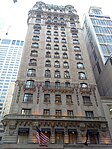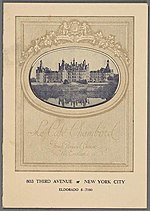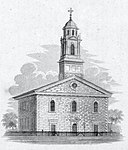Lespinasse (restaurant)
Lespinasse was a fine dining establishment initially run by and primarily associated with executive chef Gray Kunz (1955–2020). It was located in the St. Regis New York hotel in Midtown Manhattan, New York City. It was celebrated for its house culinary style termed "cuisine spontanée", a variant of nouvelle cuisine first developed by Paul Bocuse and Roger Vergé, and noted for the amount of future star chefs who worked under the aegis of Kunz in its kitchen, including; Andrew Carmellini, Floyd Cardoz, Rocco DiSpirito, and Corey Lee.Kunz, a Singapore-born Swiss, directed the eatery and served up French-Asian cuisine there until 1998. The French chef Christian Delouvrier then took over culinary control of the establishment and ran its kitchen until the restaurant closed in April 2003.
Excerpt from the Wikipedia article Lespinasse (restaurant) (License: CC BY-SA 3.0, Authors).Lespinasse (restaurant)
East 55th Street, New York Manhattan
Geographical coordinates (GPS) Address Phone number Website Nearby Places Show on map
Geographical coordinates (GPS)
| Latitude | Longitude |
|---|---|
| N 40.761277777778 ° | E -73.974388888889 ° |
Address
Astor Court
East 55th Street 2
10022 New York, Manhattan
New York, United States
Open on Google Maps







